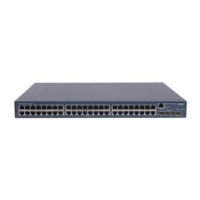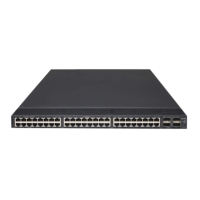3-1
3 Voice VLAN Configuration
When configuring a voice VLAN, go to these sections for information you are interested in:
z Overview
z Configuring a Voice VLAN
z Displaying and Maintaining Voice VLAN
z Voice VLAN Configuration
Overview
A voice VLAN is configured specially for voice traffic. After assigning the ports connecting to voice
devices to a voice VLAN, you can configure quality of service (QoS) parameters for the voice traffic,
thus improving transmission priority and ensuring voice quality.
A device determines whether a received packet is a voice packet by checking its source MAC address.
A packet whose source MAC address complies with the voice device Organizationally Unique Identifier
(OUI) address is regarded as voice traffic and assigned to the voice VLAN.
You can configure the OUI addresses in advance or use the default OUI addresses.
Table 3-1 lists the
default OUI address for each vendor’s devices.
Table 3-1 The default OUI addresses of different vendors
Number OUI address Vendor
1 0001-e300-0000 Siemens phone
2 0003-6b00-0000 Cisco phone
3 0004-0d00-0000 Avaya phone
4 00d0-1e00-0000 Pingtel phone
5 0060-b900-0000 Philips/NEC phone
6 00e0-7500-0000 Polycom phone
7 00e0-bb00-0000 3Com phone
z In general, as the first 24 bits of a MAC address (in binary format), an OUI address is a globally
unique identifier assigned to a vendor by IEEE. OUI addresses mentioned in this document,
however, are different from those in common sense. OUI addresses in this document are used by
the system to determine whether a received packet is a voice packet. They are the results of the
AND operation of the two arguments mac-address and oui-mask in the voice vlan mac-address
command.
z You can remove the default OUI address of a device manually and then add new ones manually.

